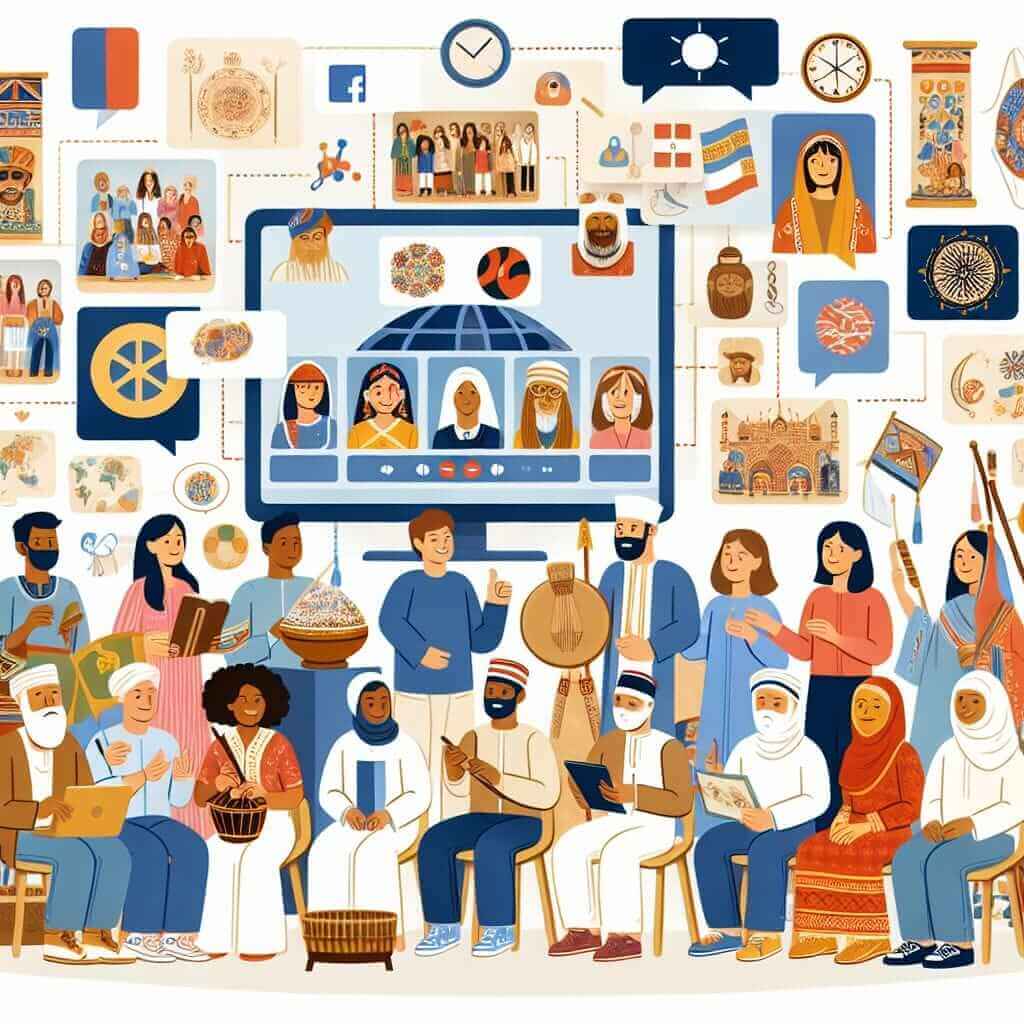The topic “The influence of global communication on cultural preservation” frequently appears in the IELTS Writing Task 2, emphasizing the impact of global communication on maintaining cultural identities. In today’s interconnected world, the concern of cultural dilution versus preservation is a critical issue.
Sample Prompts:
- Discuss the extent to which global communication influences the preservation of local cultures.
- To what extent do you agree or disagree that global communication benefits cultural preservation more than it harms it?
- Analyze the positive and negative impacts of global communication on the preservation of cultural heritage.
Choosing a Prompt
Selected Prompt:
“Discuss the extent to which global communication influences the preservation of local cultures.”
Analysing the Prompt
- Keywords: global communication, cultural preservation, local cultures
- Task response type: Discuss both sides and provide your own perspective
Sample Essay
Global communication, enabled by advancements in technology, has brought the world closer, impacting various aspects of life, including cultural preservation. This essay will discuss two sides of the argument: how global communication aids in preserving cultures and how it may lead to cultural erosion, ultimately providing a balanced perspective.
With the proliferation of the internet and social media platforms, global communication has immensely facilitated the preservation of local cultures. Cultural practices, languages, and traditions from remote corners of the world can now be documented, shared, and celebrated globally. This widespread dissemination not only enhances awareness but also fosters appreciation among diverse populations. For instance, indigenous communities can now share their folklore and rituals through videos, blogs, and social networks, ensuring their customs are recognized and valued worldwide.

Additionally, global communication enables cultural exchange and collaboration. International forums, conferences, and online platforms allow cultural practitioners to exchange knowledge and practices, helping to preserve and even rejuvenate dying traditions. For example, UNESCO’s online initiatives promote endangered cultural artifacts and encourage international cooperation to preserve these valuable cultural heritages.
However, there are significant challenges posed by global communication to cultural preservation. The dominant global culture, often driven by Western media and economic powerhouses, can overshadow and dilute local cultures. This phenomenon, known as cultural homogenization, leads to the loss of unique cultural identities and practices. Younger generations, influenced by global media, may find indigenous traditions outdated and irrelevant, opting instead for more universally recognized lifestyles and values.
Moreover, the mass appeal of global brands and entertainment can lead to a proliferation of uniform cultural products, making it difficult for local customs to survive. For instance, globally popular music and fashion trends often eclipse local art forms, relegating them to a niche status, which threatens their survival in the long run.
In conclusion, while global communication offers substantial benefits for cultural preservation through worldwide awareness and cultural exchange, it also poses risks of cultural homogenization that undermine the diversity of local cultures. The balance between these two outcomes depends largely on conscious efforts by both global entities and local communities to prioritize and preserve cultural uniqueness.
Word count: 353
Tips for Writing
- Use structure: Introduction, body paragraphs, and conclusion are crucial.
- Balance both sides: Even if you lean towards one side, discuss both perspectives.
- Use formal language: Maintain academic tone, avoid contractions and slang.
- Coherence and Cohesion: Ensure your arguments are logically structured and ideas flow smoothly.
Complex Vocabulary to Remember
- Proliferation (noun) /prəˌlɪfəˈreɪʃən/: rapid increase in numbers.
- Dissemination (noun) /dɪˌsɛmɪˈneɪʃən/: the act of spreading something, especially information, widely.
- Heritage (noun) /ˈhɛrɪtɪdʒ/: practices that are handed down from the past by tradition.
- Homogenization (noun) /həˌmɒdʒɪnaɪˈzeɪʃən/: the process of making things uniform or similar.
- Relegate (verb) /ˈrɛlɪɡeɪt/: consign or dismiss to an inferior rank or position.
Conclusion
The influence of global communication on cultural preservation brings both opportunities and challenges. While it allows for the broader dissemination and appreciation of local cultures, it also risks cultural homogenization. Students should practice writing to express and balance these views effectively in their essays.
Further practice topics related to this theme could include:
- The role of technology in preserving cultural heritage.
- How globalization affects traditional crafts and industries.
- The impact of cultural tourism on local traditions.